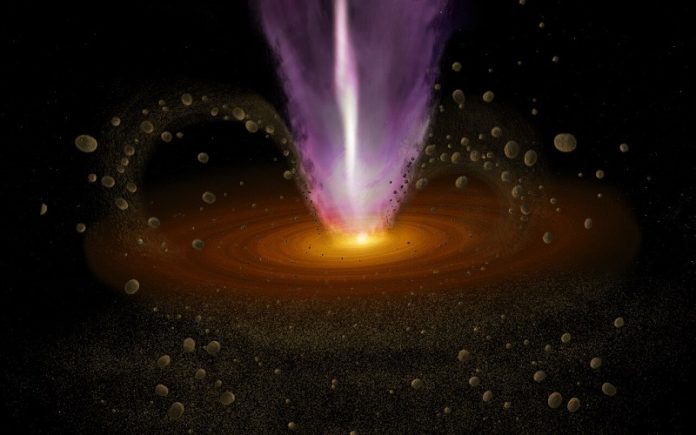
Scientists have just made an exciting discovery that helps explain one of the biggest mysteries in astronomy—how planets like Earth begin to form.
Using the powerful Atacama Large Millimeter/submillimeter Array (ALMA) telescope in Chile, researchers have observed something never seen before: larger-than-expected dust grains drifting in space near a young star.
For years, scientists have been puzzled by what’s called the “meter-size barrier.”
This refers to the challenge of how tiny particles of space dust—just thousandths of a millimeter in size—can grow into larger clumps, or “pebbles,” without either crashing into each other and breaking apart, or spiraling into the young star before they can get big enough to form planets.
Now, a research group of more than 50 astronomers and chemists from around the world may have found a solution.
They used ALMA to look at a young star system called L1551 IRS5, located in the Taurus constellation.
What they saw was surprising: millimeter-sized dust grains—about 10,000 times larger than typical space dust—had collected in the walls of a giant cavity carved out by strong stellar winds. These winds come from the star’s intense energy and blow material outward from the center.
The team believes these larger dust grains were lifted from the inner parts of the star’s disk—the dense, flat region where planets form—and pushed out into the cavity walls by these winds.
Once there, the grains are safe from falling back into the star or being destroyed. Instead, they have time and room to slowly stick together and grow larger. This gives planet-building a head start, even in the earliest stages of a star’s life.
This discovery, published in the journal Astronomy & Astrophysics, suggests that rocky planets may begin forming sooner and in more places than scientists previously thought. It also opens up a new way to understand how our own solar system—and others like it—may have formed billions of years ago.
“This discovery gives us a new way to think about how planets begin,” said Giovanni Sabatini, who led the study. “It might even help explain how Earth and other rocky planets first took shape.”
Claire Chandler, another member of the research team, added, “We’re getting closer to understanding where we come from—and how many different paths there might be to build a planet.”
Source: National Radio Astronomy Observatory.



